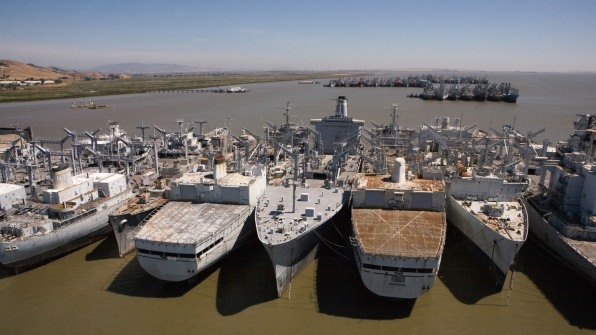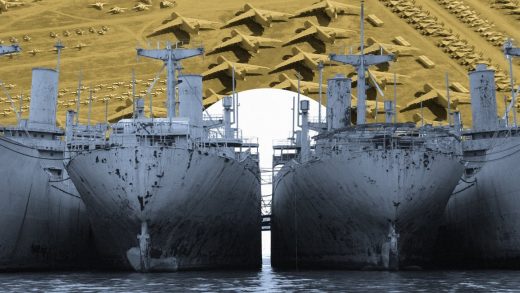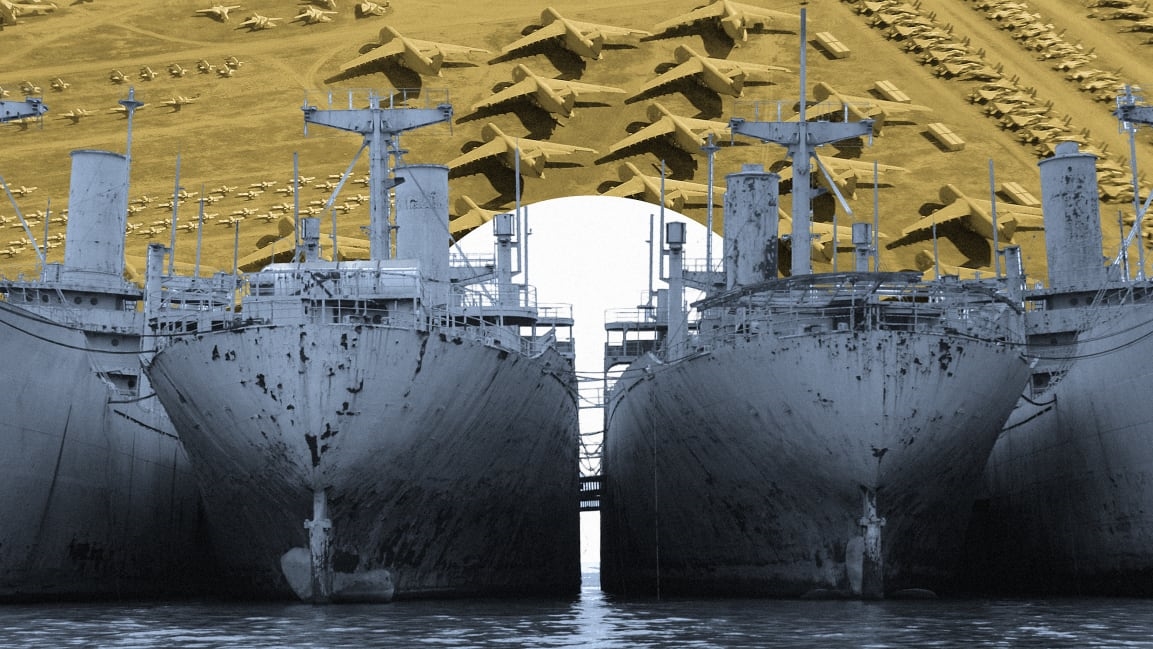The massive environmental impact of the U.S.’s constant readiness for war
The United States spends more on national defense than the next seven-highest spending countries combined, and much of that budget goes toward the quest to be ever-ready for war. Our military is constantly updating infrastructure and technology that falls out of date or into disrepair. The Navy’s 2020 plan to expand its fleet, for instance, would cost $31 billion annually over 29 years, according to the Congressional Budget Office (despite the fact that the last fleet engagement for the Navy was in 1944). The annual cost of maintaining and replacing the Department of Defense’s aviation fleet is expected to average $40 billion in the 2030s.
Where do all the old military ships and airplanes go? The Navy has had a long practice of sinking old ships off the U.S. coasts, sparking concerns from environmentalists about the pollutants these vessels leach into the ocean. Decommissioned aircrafts sit in “boneyards,” where they are sometimes harvested for parts, but otherwise sit, taking up space and baking in the desert heat.

These are just a few examples of what Joshua Reno, associate professor of anthropology at Binghamton University, says is a pervasive military waste problem. In his new book, Military Waste: The Unexpected Consequences of Permanent War Readiness, Reno explores the waste that has come out of decades of high defense spending, and the different ways this constant war readiness has impacted us all.
Reno is a cultural anthropologist, so he looks at waste differently than, say, a sanitation engineer would. It’s less, “What do you do with this stuff?” or “How do you prevent pollution?” or “How do you follow EPA rules?” he says, and more focused on the impact of waste on regular people, and how they deal with it. In his 2016 book, for which he worked at a landfill outside of Detroit, he argues that, basically, we’ve gotten so good at removing waste from our lives—particularly in the U.S., which has been deemed the most wasteful country in the world—that it makes us forget what impact our throwaway actions are actually having.

[Photos: funkwerks/iStock]
Much like excess waste, military excess is a uniquely American thing, and though military waste isn’t on most people’s radar, it’s not as easy to ignore as waste in a landfill. Prior to World War II, most military equipment was destroyed in war, but since aerial dogfights and naval fighting are less a part of modern warfare, this old equipment sticks around. “This is weird in human history, to amass huge military that doesn’t get consumed in war,” Reno says.
His book explores how, then, this waste does get consumed now, whether by the environment or by people. One chapter focuses on how military planes end up as canvases for street artists, another how Naval ships become artificial reefs, which help keep diving tourists away from natural reefs. In these ways, military waste is an opportunity, but it still forces us to reckon, Reno says, with the consequences of all that military buildup. Ships that aren’t sunk often get sent to Texas, where often migrant workers break them down for the recycling or scrap metal markets, and that labor is another unintended consequence of always being ready for war. There are also thousands of formerly used defense sites that leave toxic marks on U.S. cities, affecting many people’s day to day lives.
“I think probably very understandably, the scrutiny on the military tends to focus on the frontlines of warfare, partly because that’s where the cost of war is maybe most obvious,” Reno says. “When we think about the cost of war, we are more likely to think about veterans and more likely to think about the violence of actual warfare.” It’s not that these aren’t valid costs, he adds, but that less focused on are the other impacts that war and war-readiness leave behind, like all this waste. With his book, he’d like people to think more broadly, he says, “about the human impact of simply preparing for war, of threatening war, without even fighting it.”
(64)



